Bay Area 3.0
2018-04-11byDuanWei
by Duan Wei
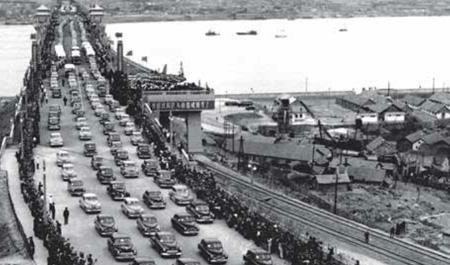
The bridge facilitates travel from one piece of land to another. It is a conduit from the known to the unknown and to the infinite and beyond.
During the earliest stages of human civilization, fallen trees and natural stone arches served as the first bridges, making crossing rivers possible. Human beings are good at learning. They began to build bridges by imitating what nature did, employing a variety of materials. More and more bridges have appeared in the world and humans have conveniently crossed wider and wider streams. Bridges also expand the areas for human activities and their abilities to change the world. Meanwhile, the function of bridges has widened as well, and they have become more beautiful. Building bridges and crossing them bring people satisfaction and happiness. Bridges are embodiments of architectural, aesthetic and philosophical values.
Many bridges have become legendary. An ancient Chinese poem recorded a poignant love story about a shepherd and a weaver girl. It was said that they were separated by the Milky Way as punishment for breaking the rules in heaven. They were only allowed to meet on the 7th day of the 7th lunar month every year. To facilitate their annual reunion, a flock of magpies from many places would form a bridge for the lovers to cross. It was dubbed the “bridge of magpies.”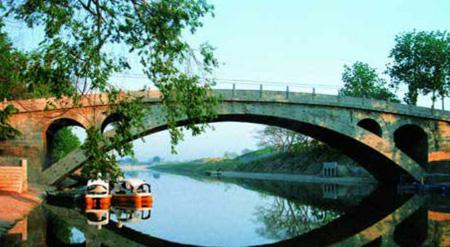
Bridges are witnesses to history. The Zhaozhou Bridge, built by renowned artisan Li Chun of the Sui Dynasty (581-618) in what is now Hebei Province, is the longest and oldest stone bridge of its kind. The bridge features two small side arches on either side of the main arch. The side arches have two important functions: They reduce the total weight of the bridge and allow runoff from floods to pass through. The design is as pragmatic as it is beautiful. The Zhaozhou Bridge has stood for over 1,400 years and survived several powerful earthquakes.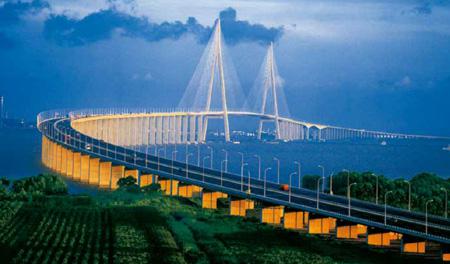
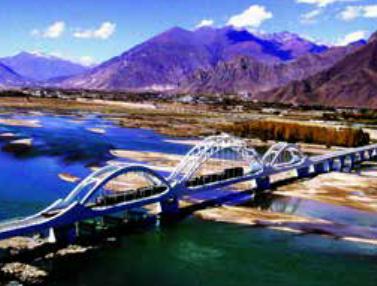
Bridges are symbols for Chinas resistance to foreign invasions. The Lugou Bridge in Beijing was completed in 1192 across the Yongding River. It is a major channel for transportation through southwestern Beijing. The bridge has preserved 501 stone lions carved on 281 balusters. Renowned Italian traveler Marco Polo even mentioned it as a“beautiful stone bridge in Cambaluc (presentday Beijing)” in his writing. The Lugou Bridge once served as a major military stronghold. The Peiping-Hankou Railway that connected Chinas northern and southern parts stretched over this river. In 1937, the invading Japanese troops used the Lugou Bridge Incident as pretense for full-fledged invasion of China. It marked the onset of the Chinese Peoples War of Resistance Against Japanese Aggression nationwide. Fang Dazeng, an eminent war correspondent, once captured the scene of Chinese soldiers fully equipped for battle gazing at the stone lions on the bridge with his camera, illustrating Chinas resolve to repel the Japanese invaders.
Bridges are treasures. Those destroyed are usually rebuilt. Despite being destroyed and rebuilt during wartime, the Qiantang River Bridge has endured for over 80 years. It is as firm as in the past. The bridge holds many records among Chinas historical bridges. It also weathered battles along the Qiantang River during the Chinese Peoples War of Resistance Against Japanese Aggression. On December 23, 1937, to stop Japanese troops from heading towards south across the Qiantang River Bridge, the Kuomintang government bombed it. Mao Yisheng, designer of the bridge, wrote in indignation that “China will prevail! The bridge will be recovered!” In 1946, Mao returned to Hangzhou to rebuild the bridge. In May 1953, rails and roads across the bridge were opened to traffic and his dream eventually came true. On September 26, 1987, on the 50th anniversary of construction of the Qiantang River Bridge, Mao, who by then had been wheelchairbound for years, insisted on stepping back on the bridge. Accompanied by his daughter, Mao tottered onto the bridge, supported by the handrail. He lingered on the bridge in silence, gazing at the surface of the torrent.
Bridges are symbols of the rapid development of the Peoples Republic of China. The Wuhan Yangtze River Bridge, designed by a group of specialists headed by Mao Yisheng, was the first bridge to span the Yangtze River. It is also the first doubledeck road-rail bridge built since the founding of the Peoples Republic of China in 1949. Construction began on September 1, 1955 and commenced from both banks (Wuchang and Hanyang, two of the three sections of the city of Wuhan in central China), marching towards the center of the river simultaneously. Construction was completed in October 1957, 15 months ahead of schedule. The bridge connects the three parts of Wuhan City and the Beijing-Guangzhou Railway that passes over the Yangtze River, a major improvement for transportation across the third longest river in the world. “The bridge spans the Yangtze River, converting the natural moat into a thoroughfare,” wrote Chairman Mao Zedong.
Bridges not only narrow physical distance, but also promote the development of connected areas. Thanks to bridges, mankind can reach across not only streams, but also rivers, lakes and waters as wide as oceans.
Of thousands of famous bays and hundreds of well-known gulf cities across the world, the New York Bay Area, San Francisco Bay Area and Tokyo Bay are most developed.
The first-generation Bay Area featured harbors and ports. It was followed by Bay Area Version 2.0, which falls into three categories: Advanced manufacturing (such as the Tokyo Bay); financial services (represented by the New York Bay Area); scientific and technological innovation (like the San Francisco Bay Area).
Bridges support transportation in those areas, including the Great Seto Bridge and Tokyo Gate Bridge in the Tokyo Bay, the Brooklyn Bridge and George Washington Bridge in the New York Bay Area and the San Francisco-Oakland Bay Bridge and Golden Gate Bridge in the San Francisco Bay Area. Such structures help the integration and connection of infrastructure around the bays and become drivers of regional development.
The innovative Chinese people long for rich bridge narratives.
Cities around the Pearl River Delta were the first to introduce the policy of reform and opening up. With the geographical advantage of proximity to Hong Kong and Macao, this region features the biggest piece of Chinas exported-oriented economy and the most advanced mechanisms of the market economy, and serves as a platform for Chinas participation in economic globalization and international division of labor. The concept of a Greater Bay Area is becoming increasingly clear under the framework of “One Country, Two Systems” and due to the fact that Guangdong Province, Hong Kong and Macao have become important partners in the coordinated development of the region.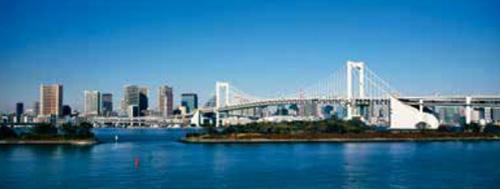
Since the 1980s, transportation between Chinas mainland, Hong Kong and Macao, especially the land transportation infrastructure between Hong Kong and the east bank of the Pearl River Delta, has achieved impressive progress. It ensures and drives the coordinated development of Hong Kong and the Pearl River Delta area. However, the connection between Hong Kong and the west bank of the Pearl River Delta has remained weak. After the Asian financial crisis of 1997, the government of the Hong Kong Special Administrative Region found it necessary to build a crosssea channel connecting Hong Kong, Macao and Zhuhai to fully leverage the advantages of the two special administrative regions and boost the economy of Hong Kong. Thus, it proposed construction of the Hong Kong-Zhuhai-Macao Bridge to the central government in 2002.
A decade later, a magnificent bridge finally shimmers over the Lingdingyang Channel. On February 6, 2018, major work on the worlds longest cross-sea bridge passed authorities evaluation. The check proved that the quality of the main structure of the bridge is up to standard and reliable. The bridge is suitable for trial operation.
In the new era of “One Country, Two Systems,” Bay Area 3.0 is gradually emerging as humans continue to blaze trails across waters.